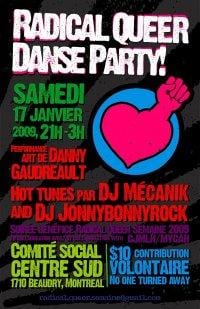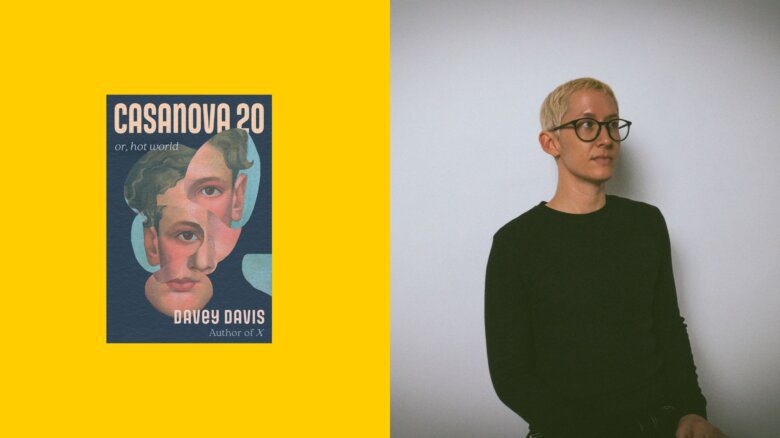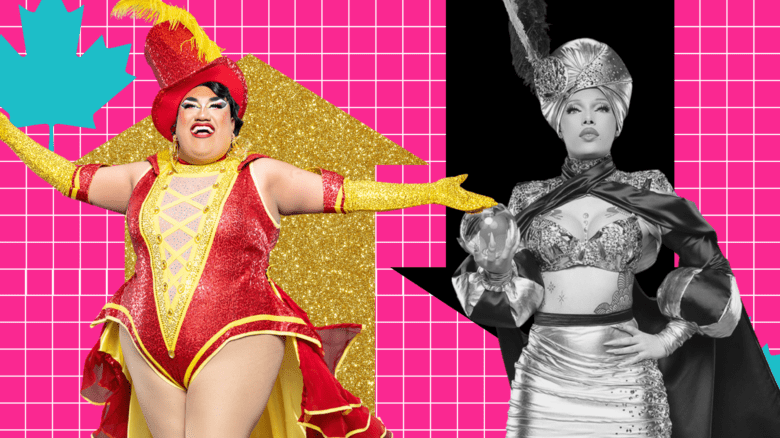Andrew Thorne, one of the organizers of Radical Queer Week 2009, isn’t satisfied with Montreal’s queer offerings.
“Even if there are great parties or great queer film nights or whatever, there’s never enough,” he says. “We always need to be pooling our resources and sharing our information.” He pauses, adding with a smile, “And trying to recruit more people.”
To that end, a bunch of local organizers have come together to create Radical Queer Week, a bilingual 10-day event taking place in Montreal from Mar 6 to 15.
The week will be jam-packed with performances, interactive workshops, community-based direct action, video projections, a winter carnival day, a slumber party, food sharing, and an all-ages queer punk show. As the group’s Facebook page says, it’s all about “getting our anti-oppression freak on.”
“We want it to remain an unaffiliated event that is not defined by someone else’s politics,” Thorne says. Not interested in appealing to corporate sponsors for cash, the independent group is holding a fundraising party this Saturday at the Comité Social Centre Sud, just above the Village.
“The party is not going to encompass what we’re trying to do with the whole week. It’s about getting the word out and having fun.”
The benefit will include a performance by multidisciplinary artist Danny Gaudreault, as well as sets by DJs Faggotron, Mécanik, and Jonnybonnyrock. Concerned with inclusivity, the group is asking for a $10 voluntary contribution while emphasizing that no one will be turned away for lack of funds.
The group needs to raise big money to match their big plans, however. In addition to pulling off a different event each night, they’re planning to rent a studio to be used as a headquarters and public crash space.
Why put so much effort into organizing a separate queer event in a city that already has alternatives like Pervers/Cite and Faggity Ass Fridays?
“There is a need to bring queerness and the bonds in the community that are made among queer people into a more public realm,” Thorne says. “Right now, it is kind of limited to a fringe, underground scene or to the Village or to a more private realm.” Thorne sees Radical Queer Week itself as “a form of direct action because we’re making ourselves very visible and we’re making our own fun.”
“There is something that makes us feel different from the dominant society and we don’t necessarily just want to assimilate into that,” he says. He hopes events like Radical Queer Week help people, whether or not they identify as queer, “to be able to own their differences and not have to feel like it’s wrong or shameful, to finally start to get into it.”
The group welcomes input from the community. “We’ve tried to make [the week] as wide open as possible. By having as many people engage in that conversation as possible, it will bring a whole spectrum of viewpoints, maybe make us realize that there’s a group we left out.”
Thorne takes it a step further. “I don’t think this kind of information should be hoarded among, like, a secret society. The more accessible, the more visible we are, more and more people might start to question their role in capitalism and in a homophobic society.”

 Why you can trust Xtra
Why you can trust Xtra


